10 Absolutely Bizarre Cases of Amnesia
Nathan Johnson
Published
09/15/2015
creepy stories
- List View
- Player View
- Grid View
Advertisement
-
1.
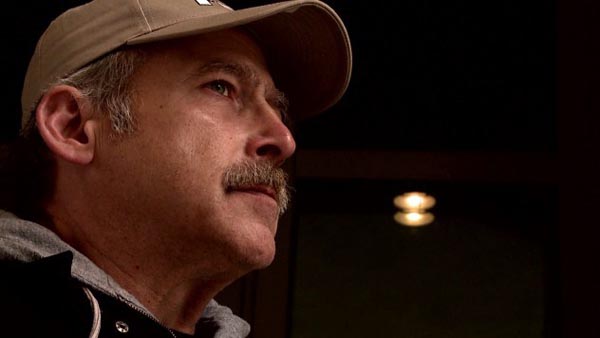 On August 31, 2004, a man was found in a dumpster behind a Burger King in Richmond Hill, Georgia with no identification. He was lying unconscious and naked with head trauma. When he came to, he had no idea who he was. He couldn't remember his name and didn't even recognize his face. This mysterious man was eventually diagnosed with dissociative amnesia. The man, dubbed as “Burger King Doe” by the police, was taken to Memorial Health University Medical Center, where records state he was semiconscious. He eventually recovered, but never regained his memory. He decided to take his name from the restaurant where he was found: B.K. for Burger King and, now, Benjaman Kyle. Kyle woke up with cataracts in both eyes. Nine months later, when a charity raised enough money to pay for an operation, he saw himself in the mirror for the first time and realized he was 20 years older than he thought he was. He has vague memories of being in Indianapolis as a kid and of living in Denver. Even after his DNA samples were sent to the FBI's National Criminal Justice Information Services Division in West Virginia and after telling Dr. Phil that he was born 10 years to the day before Michael Jackson (who was born on August 29, 1958), his true identity remains a mystery. Several online petitions have been created asking lawmakers to grant Kyle a new Social Security number. In February 2015, he cut ties with forensic genealogist Colleen Fitzpatrick when she reported that she was close to finding a DNA match with the mysterious man. Maybe Kyle just wants to live in the present. Due to his amnesia, Kyle is the only American listed as missing despite his whereabouts being known.
On August 31, 2004, a man was found in a dumpster behind a Burger King in Richmond Hill, Georgia with no identification. He was lying unconscious and naked with head trauma. When he came to, he had no idea who he was. He couldn't remember his name and didn't even recognize his face. This mysterious man was eventually diagnosed with dissociative amnesia. The man, dubbed as “Burger King Doe” by the police, was taken to Memorial Health University Medical Center, where records state he was semiconscious. He eventually recovered, but never regained his memory. He decided to take his name from the restaurant where he was found: B.K. for Burger King and, now, Benjaman Kyle. Kyle woke up with cataracts in both eyes. Nine months later, when a charity raised enough money to pay for an operation, he saw himself in the mirror for the first time and realized he was 20 years older than he thought he was. He has vague memories of being in Indianapolis as a kid and of living in Denver. Even after his DNA samples were sent to the FBI's National Criminal Justice Information Services Division in West Virginia and after telling Dr. Phil that he was born 10 years to the day before Michael Jackson (who was born on August 29, 1958), his true identity remains a mystery. Several online petitions have been created asking lawmakers to grant Kyle a new Social Security number. In February 2015, he cut ties with forensic genealogist Colleen Fitzpatrick when she reported that she was close to finding a DNA match with the mysterious man. Maybe Kyle just wants to live in the present. Due to his amnesia, Kyle is the only American listed as missing despite his whereabouts being known. -
2.
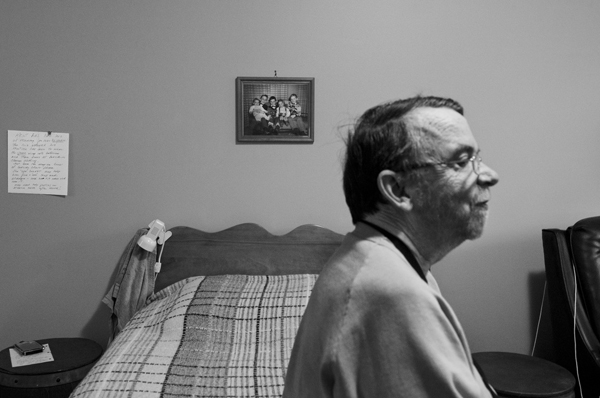 In October 1981, Ken Cochrane was involved in an accident as he was riding home on a motorcycle from his job at a manufacturing plant. Due to the crash, Cochrane severely impaired his episodic memory. His amnesia left him unable to remember his past or ponder his future, but left his semantic memory (general world knowledge without emotional tone or context) intact. So, while Cochrane (aka, Patient K.C.) was able to recall general factual information, he was unable to remember emotional details of events from his past, such as his brother's death and a dangerous fall he had at his home. The study of Cochrane's brain completely changed what scientists know about memory. Cochrane could remember certain facts even without using his hippocampus (the part of the brain for creating new memories while maintaining old ones). Researchers discovered that memory, at least in some cases, must be able to bypass this part of the brain. Cochrane's brain still plays a part in the study of neurological disorders, head injuries, Alzheimer's and epilepsy. He was reportedly “blown away” when he learned of his contribution to science shortly before he passed away.
In October 1981, Ken Cochrane was involved in an accident as he was riding home on a motorcycle from his job at a manufacturing plant. Due to the crash, Cochrane severely impaired his episodic memory. His amnesia left him unable to remember his past or ponder his future, but left his semantic memory (general world knowledge without emotional tone or context) intact. So, while Cochrane (aka, Patient K.C.) was able to recall general factual information, he was unable to remember emotional details of events from his past, such as his brother's death and a dangerous fall he had at his home. The study of Cochrane's brain completely changed what scientists know about memory. Cochrane could remember certain facts even without using his hippocampus (the part of the brain for creating new memories while maintaining old ones). Researchers discovered that memory, at least in some cases, must be able to bypass this part of the brain. Cochrane's brain still plays a part in the study of neurological disorders, head injuries, Alzheimer's and epilepsy. He was reportedly “blown away” when he learned of his contribution to science shortly before he passed away. -
3.
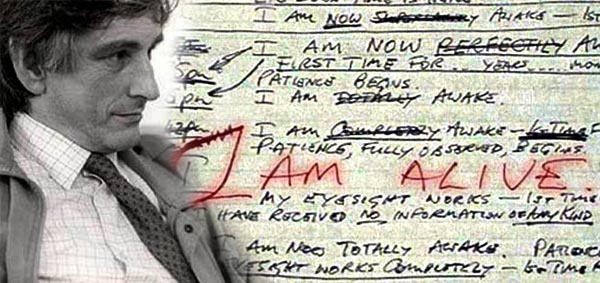 Clive Wearing was a British conductor and musician who contracted a brain infection with herpes encephalitis in 1985. The infection caused him to have a rare case of retro + anterograde amnesia leaving him with a memory span of fewer than 20 seconds. Damage to his hippocampus destroyed Clive's ability to transfer short-term memory to long-term, creating a “moment to moment” consciousness. While not being able to remember things that happened mere moments ago, Wearing can recognize his wife and his musical memory functions properly. The former conductor is still able to read and play the piano beautifully. In a diary provided by his caretakers, Clive was encouraged to record his thoughts. Page after page is filled with entries similar to the following: 8:31 AM: Now I am really, completely awake. (Scratched out) 9:06 AM: Now I am perfectly, overwhelmingly awake. (Scratched out) 9:34 AM: Now I am superlatively, actually awake. Wearing's love for his second wife Deborah—who he married the year prior to his illness—is undiminished. He greets her joyously every time they meet, either believing he has not seen her in years or that they have never met before. The couple renewed their wedding vows in 2002. Wearing was able to “participate completely. He "remembered the Lord's Prayer and said all that he wanted to say” according to his wife.
Clive Wearing was a British conductor and musician who contracted a brain infection with herpes encephalitis in 1985. The infection caused him to have a rare case of retro + anterograde amnesia leaving him with a memory span of fewer than 20 seconds. Damage to his hippocampus destroyed Clive's ability to transfer short-term memory to long-term, creating a “moment to moment” consciousness. While not being able to remember things that happened mere moments ago, Wearing can recognize his wife and his musical memory functions properly. The former conductor is still able to read and play the piano beautifully. In a diary provided by his caretakers, Clive was encouraged to record his thoughts. Page after page is filled with entries similar to the following: 8:31 AM: Now I am really, completely awake. (Scratched out) 9:06 AM: Now I am perfectly, overwhelmingly awake. (Scratched out) 9:34 AM: Now I am superlatively, actually awake. Wearing's love for his second wife Deborah—who he married the year prior to his illness—is undiminished. He greets her joyously every time they meet, either believing he has not seen her in years or that they have never met before. The couple renewed their wedding vows in 2002. Wearing was able to “participate completely. He "remembered the Lord's Prayer and said all that he wanted to say” according to his wife. -
4.
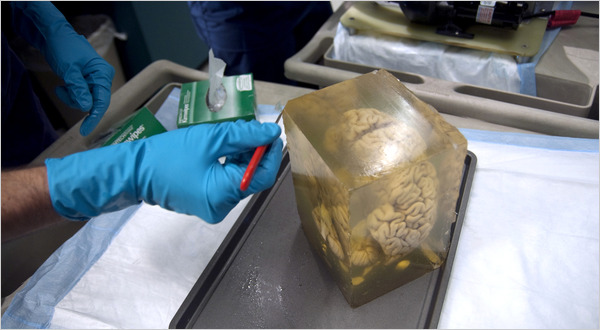 Another person responsible for neurological research thanks to his amnesia is Henry Gustav Molaison, known to the world as “Patient HM.” As a child, Henry suffered from epilepsy, which may have been caused by a head injury he sustained when he was seven years old. At first his seizures were minor, but by the time Henry was 27, he was unable to work. In 1953, his doctor performed something called a bilateral medial temporal lobe resection. This involved removing a portion of Henry's temporal lobe, including parts of the hippocampus and amygdala, from both sides of the brain. The surgeon removed these portions of the brain through a hole in Molaison's skull by using a hand-cranked drill, a small vacuum, and a silver straw. While the operation was successful in its primary goal of controlling Molaison's epilepsy, he suffered from severe anterograde amnesia. This meant that although his working and procedural memory were intact, he could not commit new events to his explicit memory. Molaison was unable to hold memories for longer than 30-60 seconds. Scientists used his misfortune to study the brain and memory, with Molaison serving as a willing patient for decades. In 1957, Dr. Brenda Milner, a psychologist from McGill University in Montreal, published the first results of her formal testing. This paper became one of the most cited papers in neuroscience. Molaison's case played a very important role in the development of theories that explain the link between brain function and memory.
Another person responsible for neurological research thanks to his amnesia is Henry Gustav Molaison, known to the world as “Patient HM.” As a child, Henry suffered from epilepsy, which may have been caused by a head injury he sustained when he was seven years old. At first his seizures were minor, but by the time Henry was 27, he was unable to work. In 1953, his doctor performed something called a bilateral medial temporal lobe resection. This involved removing a portion of Henry's temporal lobe, including parts of the hippocampus and amygdala, from both sides of the brain. The surgeon removed these portions of the brain through a hole in Molaison's skull by using a hand-cranked drill, a small vacuum, and a silver straw. While the operation was successful in its primary goal of controlling Molaison's epilepsy, he suffered from severe anterograde amnesia. This meant that although his working and procedural memory were intact, he could not commit new events to his explicit memory. Molaison was unable to hold memories for longer than 30-60 seconds. Scientists used his misfortune to study the brain and memory, with Molaison serving as a willing patient for decades. In 1957, Dr. Brenda Milner, a psychologist from McGill University in Montreal, published the first results of her formal testing. This paper became one of the most cited papers in neuroscience. Molaison's case played a very important role in the development of theories that explain the link between brain function and memory. -
5.
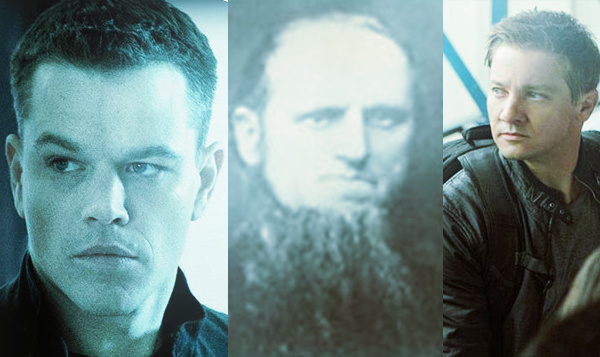 Jason Bourne is, perhaps, one of the most popular fictional characters to have amnesia. This character, who has appeared in numerous novels and films, is forced to uncover his past as a government assassin after losing his memory. While millions know Jason Bourne, many people don't know that he was born of another Bourne. In other words, Jason was named after Ansel Bourne, one of the first known amnesiacs. Ansel Bourne was an evangelical preacher from Greene, Rhode Island, who took a trip to visit his sister in Providence on January 17, 1887. Inexplicably, Bourne ended up withdrawing his savings and traveled to Norristown, Pennsylvania instead. While there, he decided to open up a general store under the name Albert J. Brown and started a new life as a confectioner and stationer. Brown would continue to live his new life until March 14, 1887, when he woke up once again as Ansel Bourne. He had no recollection of the previous two months, the existence of his other personality as Brown, or how he ended up in Pennsylvania. Bourne went into what is now called a “fugue state”— a state of amnesia where the person forgets the details of their identity (including their name) but otherwise seems to remember everything else. When he returned home, he was studied by the Society for Physical Research where he assumed the A.J. Brown alter ego under hypnosis. After the hypnosis, Ansel Bourne lived out the rest of his life without incident and never assumed the persona of Albert J. Brown again.
Jason Bourne is, perhaps, one of the most popular fictional characters to have amnesia. This character, who has appeared in numerous novels and films, is forced to uncover his past as a government assassin after losing his memory. While millions know Jason Bourne, many people don't know that he was born of another Bourne. In other words, Jason was named after Ansel Bourne, one of the first known amnesiacs. Ansel Bourne was an evangelical preacher from Greene, Rhode Island, who took a trip to visit his sister in Providence on January 17, 1887. Inexplicably, Bourne ended up withdrawing his savings and traveled to Norristown, Pennsylvania instead. While there, he decided to open up a general store under the name Albert J. Brown and started a new life as a confectioner and stationer. Brown would continue to live his new life until March 14, 1887, when he woke up once again as Ansel Bourne. He had no recollection of the previous two months, the existence of his other personality as Brown, or how he ended up in Pennsylvania. Bourne went into what is now called a “fugue state”— a state of amnesia where the person forgets the details of their identity (including their name) but otherwise seems to remember everything else. When he returned home, he was studied by the Society for Physical Research where he assumed the A.J. Brown alter ego under hypnosis. After the hypnosis, Ansel Bourne lived out the rest of his life without incident and never assumed the persona of Albert J. Brown again. -
6.
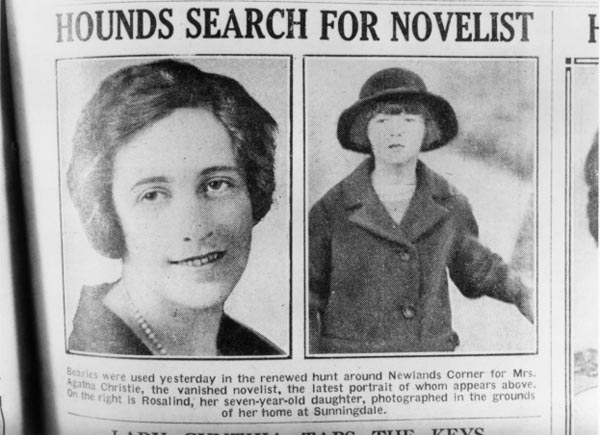 Agatha Christie is listed in the Guinness Book of World Records as the best-selling novelist of all time. Her tales of mystery captured the imaginations of millions of readers. On the night of December 3, 1926, Christie got up from her chair and climbed the stairs of her home in Sunningdale, England. She kissed her sleeping daughter, Rosalind, goodnight and made her way back downstairs. Then, she climbed into her car and drove off into the night. She would not be seen again for eleven days. The morning after she disappeared, her abandoned car was found about an hour away but the famed writer was nowhere to be seen. Word got out that her husband, Archibald, was planning on divorcing her, and rumors began to swirl that she had been murdered. Finally, on December 14, Christie was found alive and well, registered under the name Teresa Neele at the Swan Hydropathic Hotel in Harrogate. She claimed to have no memory of how she'd ended up there. While some believe that Christie faked the whole episode as a publicity stunt (Teresa Neele was the name of her husband's mistress), there is evidence that the author entered a fugue state and temporarily lost her memory. It has been theorized that Christie's impending divorce and the recent death of her mother caused her to enter a deep depression. Crashing her car might have been the breaking point that caused her to develop amnesia and forget who she was. Christie died in 1976 with the world never knowing the full truth.
Agatha Christie is listed in the Guinness Book of World Records as the best-selling novelist of all time. Her tales of mystery captured the imaginations of millions of readers. On the night of December 3, 1926, Christie got up from her chair and climbed the stairs of her home in Sunningdale, England. She kissed her sleeping daughter, Rosalind, goodnight and made her way back downstairs. Then, she climbed into her car and drove off into the night. She would not be seen again for eleven days. The morning after she disappeared, her abandoned car was found about an hour away but the famed writer was nowhere to be seen. Word got out that her husband, Archibald, was planning on divorcing her, and rumors began to swirl that she had been murdered. Finally, on December 14, Christie was found alive and well, registered under the name Teresa Neele at the Swan Hydropathic Hotel in Harrogate. She claimed to have no memory of how she'd ended up there. While some believe that Christie faked the whole episode as a publicity stunt (Teresa Neele was the name of her husband's mistress), there is evidence that the author entered a fugue state and temporarily lost her memory. It has been theorized that Christie's impending divorce and the recent death of her mother caused her to enter a deep depression. Crashing her car might have been the breaking point that caused her to develop amnesia and forget who she was. Christie died in 1976 with the world never knowing the full truth. -
7.
 On February 28, 2013, a man was found unconscious at a Motel 6 in Palm Springs, California. He was carrying several forms of ID including Social Security card, a passport, a California identification card and a veteran's medical card along with photos of his family. The man, identified as Michael Boatwright, was taken to the Desert Region Medical Center. When he came to, he had no memory of being Michael Boatwright and didn't recognize anyone in the pictures that were found with him. Boatwright, who was born in Florida, now spoke only Swedish. He answered to the name of Johan Ek and was diagnosed with transient global amnesia. Boatwright's therapists felt his amnesia was caused by physical or emotional trauma. When the 61-year-old man first saw himself in the mirror, he said he was going to throw up. Boatwright/Ek's tale drew worldwide attention. When a local newspaper found Boatwright's sister and a friend of his from China, Gifford Seals, details of his past began to emerge. Searls explained that Boatwright had moved back to the desert and was looking for work as a tennis instructor. He was found unconscious with amnesia after the hotel turned him down. The newly emerged Mr. Ek moved to Sweden to start a new life. He never spoke English again. Sadly, Ek died in Sweden in April 2014.
On February 28, 2013, a man was found unconscious at a Motel 6 in Palm Springs, California. He was carrying several forms of ID including Social Security card, a passport, a California identification card and a veteran's medical card along with photos of his family. The man, identified as Michael Boatwright, was taken to the Desert Region Medical Center. When he came to, he had no memory of being Michael Boatwright and didn't recognize anyone in the pictures that were found with him. Boatwright, who was born in Florida, now spoke only Swedish. He answered to the name of Johan Ek and was diagnosed with transient global amnesia. Boatwright's therapists felt his amnesia was caused by physical or emotional trauma. When the 61-year-old man first saw himself in the mirror, he said he was going to throw up. Boatwright/Ek's tale drew worldwide attention. When a local newspaper found Boatwright's sister and a friend of his from China, Gifford Seals, details of his past began to emerge. Searls explained that Boatwright had moved back to the desert and was looking for work as a tennis instructor. He was found unconscious with amnesia after the hotel turned him down. The newly emerged Mr. Ek moved to Sweden to start a new life. He never spoke English again. Sadly, Ek died in Sweden in April 2014. -
8.
 One morning in 2008, 32-year-old Naomi Jacobs woke up in a home she didn't recognize, to a son she didn't know. She thought she was only 15 years old. The British mother had not suffered any severe trauma to the head—instead, her dissociative amnesia was attributed to stress. The condition causes a loss of personal memories and autobiographical information but typically only for a brief time. Jacobs was in “total shock” upon hearing her son call her “mum” for the first time. Although the Manchester, England resident still had her semantic memories like driving and remembering certain phone numbers, she had lost her emotional memories. Her last memory was of falling asleep in her bunk bed that she shared with her sister as a teen. After eight weeks, Jacob's memory returned to normal. Her tale of piecing her life back together is detailed in her book, Forgotten Girl.
One morning in 2008, 32-year-old Naomi Jacobs woke up in a home she didn't recognize, to a son she didn't know. She thought she was only 15 years old. The British mother had not suffered any severe trauma to the head—instead, her dissociative amnesia was attributed to stress. The condition causes a loss of personal memories and autobiographical information but typically only for a brief time. Jacobs was in “total shock” upon hearing her son call her “mum” for the first time. Although the Manchester, England resident still had her semantic memories like driving and remembering certain phone numbers, she had lost her emotional memories. Her last memory was of falling asleep in her bunk bed that she shared with her sister as a teen. After eight weeks, Jacob's memory returned to normal. Her tale of piecing her life back together is detailed in her book, Forgotten Girl. -
9.
 Maybe the movie Groundhog Day wasn't as far-fetched as we thought. Patient WO, known only as William, can remember everything in his life up until 1:40 pm on March 14, 2005—the moment he was injected with an anesthetic before a routine root canal treatment. Since that day, the now 48-year-old British man can only store memories for 90 minutes. William shows no sign of brain damage, which baffles neuropsychologists as to what causes his curious condition. William's symptoms are similar to patients suffering from what's known as anterograde amnesia. Anterograde amnesia occurs when damage to certain regions in the brain causes short spans of awareness as well as complete and rapid memory loss. Experts believe William's amnesia could be a breakdown of protein synthesis in the brain. Although William can remember his life up to March 14, 2005, and not much else, he manages to remain oriented throughout the day via the use of continuous access to an electronic diary and prompts.
Maybe the movie Groundhog Day wasn't as far-fetched as we thought. Patient WO, known only as William, can remember everything in his life up until 1:40 pm on March 14, 2005—the moment he was injected with an anesthetic before a routine root canal treatment. Since that day, the now 48-year-old British man can only store memories for 90 minutes. William shows no sign of brain damage, which baffles neuropsychologists as to what causes his curious condition. William's symptoms are similar to patients suffering from what's known as anterograde amnesia. Anterograde amnesia occurs when damage to certain regions in the brain causes short spans of awareness as well as complete and rapid memory loss. Experts believe William's amnesia could be a breakdown of protein synthesis in the brain. Although William can remember his life up to March 14, 2005, and not much else, he manages to remain oriented throughout the day via the use of continuous access to an electronic diary and prompts. -
10.
 On October 20, 1985, a newspaper reporter at the Tacoma News Tribune named Jody Roberts disappeared without a trace. That same month, it was reported that a young woman walked out of a suburban Denver shopping mall, frantic because she couldn't remember who she was. After psychiatric treatment had failed to help, she took on the name Jane Dee Williams, enrolled in college and went on with her life. Twelve years later, in 1997, police determined that the married mother of four, now living in Sitka, Alaska, was in fact Jody Roberts, daughter of Jim and Marilyn Roberts of Lake Oswego, Oregon. Dee had no memory of her parents or her previous life but was happy to reunite with them. After a few weeks of fame, she was reportedly going to write a book and work on a documentary about her life. Then, Jody (or is it Jane Dee) disappeared again. She left her husband and kids and reportedly “went south.” The phone numbers of her parents and her sister in Oregon were disconnected. And the mystery goes on…
On October 20, 1985, a newspaper reporter at the Tacoma News Tribune named Jody Roberts disappeared without a trace. That same month, it was reported that a young woman walked out of a suburban Denver shopping mall, frantic because she couldn't remember who she was. After psychiatric treatment had failed to help, she took on the name Jane Dee Williams, enrolled in college and went on with her life. Twelve years later, in 1997, police determined that the married mother of four, now living in Sitka, Alaska, was in fact Jody Roberts, daughter of Jim and Marilyn Roberts of Lake Oswego, Oregon. Dee had no memory of her parents or her previous life but was happy to reunite with them. After a few weeks of fame, she was reportedly going to write a book and work on a documentary about her life. Then, Jody (or is it Jane Dee) disappeared again. She left her husband and kids and reportedly “went south.” The phone numbers of her parents and her sister in Oregon were disconnected. And the mystery goes on…
On August 31, 2004, a man was found in a dumpster behind a Burger King in Richmond Hill, Georgia with no identification. He was lying unconscious and naked with head trauma. When he came to, he had no idea who he was. He couldn't remember his name and didn't even recognize his face. This mysterious man was eventually diagnosed with dissociative amnesia. The man, dubbed as “Burger King Doe” by the police, was taken to Memorial Health University Medical Center, where records state he was semiconscious. He eventually recovered, but never regained his memory. He decided to take his name from the restaurant where he was found: B.K. for Burger King and, now, Benjaman Kyle. Kyle woke up with cataracts in both eyes. Nine months later, when a charity raised enough money to pay for an operation, he saw himself in the mirror for the first time and realized he was 20 years older than he thought he was. He has vague memories of being in Indianapolis as a kid and of living in Denver. Even after his DNA samples were sent to the FBI's National Criminal Justice Information Services Division in West Virginia and after telling Dr. Phil that he was born 10 years to the day before Michael Jackson (who was born on August 29, 1958), his true identity remains a mystery. Several online petitions have been created asking lawmakers to grant Kyle a new Social Security number. In February 2015, he cut ties with forensic genealogist Colleen Fitzpatrick when she reported that she was close to finding a DNA match with the mysterious man. Maybe Kyle just wants to live in the present. Due to his amnesia, Kyle is the only American listed as missing despite his whereabouts being known.
10/10
1/10


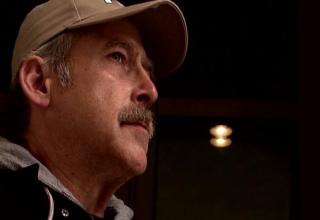





0 Comments